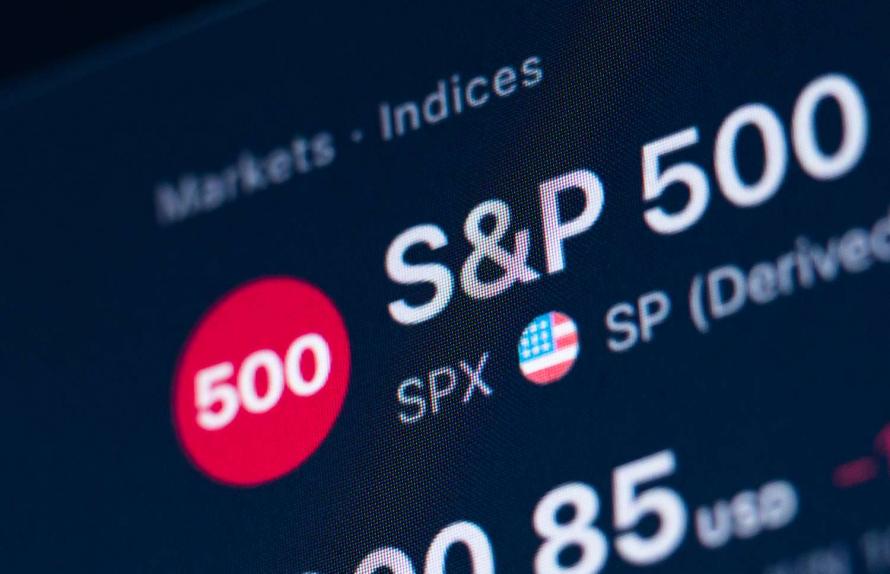Last week’s higher-than-expected inflation data in the US showed the considerable sensitivity of risky assets like stocks to worse data and their potentially quick and larger correction. At the beginning of the year, indices such as the S&P 500 or the Nasdaq 100 reached new historical highs and last trading week ended a 5-week winning streak.
The core index of consumer prices (CPI) increased by 0.4% month-on-month, thanks to prices in services. This is certainly more than the targeted 2% per year by simple annualization, but it cannot be calculated this way. Especially with regard to the one-time adjustment of new company prices at the beginning of the year, which will most likely not be repeated throughout the year. Furthermore, a higher producer price index (PPI) would also be reported, which reduced the pace to 0.9% pa month-on-month, but above the expected 0.6% annual rate. If we take the core PPI for final consumption, which does not include rents, but is strongly correlated with the core CPI and especially the core PCED (which the Fed mainly tracks), we arrive at 2.4% pa. Thus, the inflation target achieved. After taking into account the rents of 3.9% pa, which are included in the CPI index “ridiculously” with a considerable delay by calling home owners how much they would hypothetically charge for rent, the market indices of the real estate market point to a persistent decline that will suddenly manifest itself. It is possible that we will instead see numbers below the inflation target, or even worse, deflation. Development of nominal inflation indices in the world:
So, ceteris paribus, this should not threaten the further upward trend of stock markets, however, as I wrote last time, it will probably be quite volatile. Especially with regard to highly positive sentiment (contrarian usually leads to significant corrections in share prices down) according to increased Bull/Bear indicators or a relatively low Put/Call ratio (but still above the historical average of 0.65 vs. 0.60). In terms of valuation, the S&P 500 index is 26% more expensive than the average since 2009, however, sector wise now with a much higher ratio of technology companies. With the same sector weights (equal weight), it is then only 5% above the average. The forward S&P 500 got above 20 this month, however we were hovering around 25 in the late 1990s.
The question is, is it possible to buy at highs? With AOS algorithms, this is quite natural for breakout systems. After all, momentum is historically the strongest factor with considerable profitability (eg Andrew Berkin and Larry Swedroe: Your Complete Guide to Factor-Based Investing: The Way Smart Money Invests Today). Let’s look at the new highs (phases marked in black) for the S&P 500 index:
It can be seen that since the 1980s, the phases of new maxima have lengthened quite a bit, which of course may not always be the case (see the maximum before the global financial crisis, which subsequently meant a decline in buy-and-hold over 60%).
Since 1970, the average annual S&P buy-and-hold return for purchases at new highs has been 9.1%, while for purchases on other days (off new highs) it has been 8.7%. Average cumulative returns from 1988 to the end of last year for individual time zones (purchases at new highs in green vs. gray for purchases on other days):
The forward P/E valuation for the S&P 500 is 20.3. The average after the 2008 financial crisis was 21.6. In the late 1990s, the key Fed funds rate was similar to now at 5.2% and the forward P/E averaged 25. The presidential election year in the US will certainly also bring increased volatility in the markets. If not extreme, then certainly a very favorable environment for algorithmic trading strategies (AOS). One way or another, it is always good to be diversified into uncorrelated asset-markets and strategies (long/short).
Finally, let’s look at the development of the popular micro Nasdaq 100 (MNQ) and micro S&P 500 (MES) indices and their ratio spread on the Chicago Stock Exchange over the past 12 months (SOL Trader, daily data):
I wish you successful trades!
Martin Lembak
Striker Securities
Lembros Commodity Advisors LLC
2024-02-20 18:48:58
#Stocks #highs #good #idea #shop


